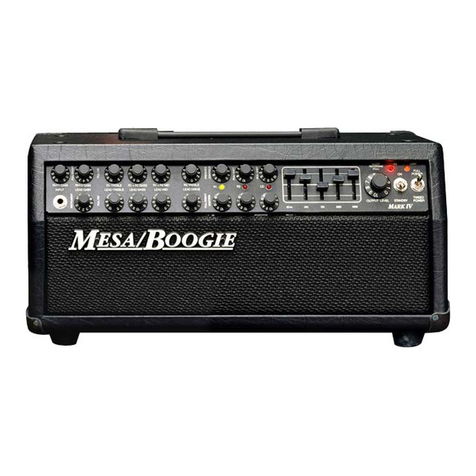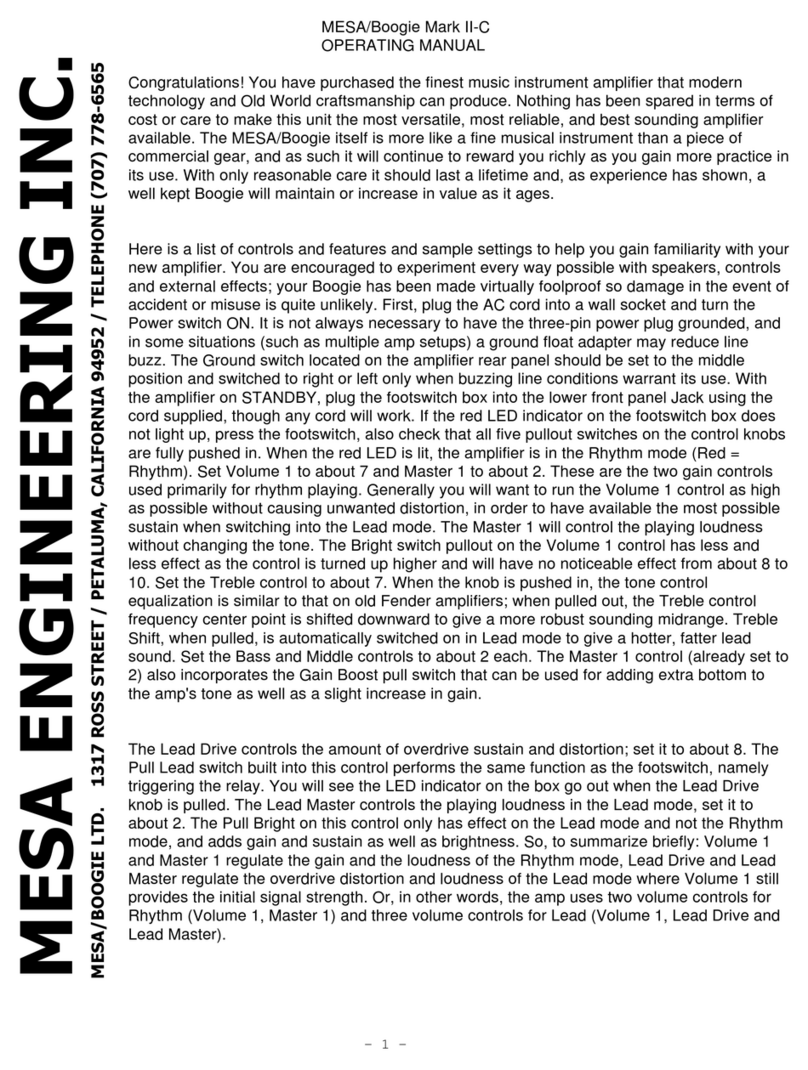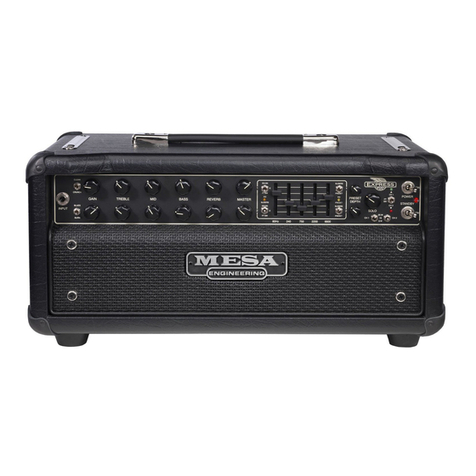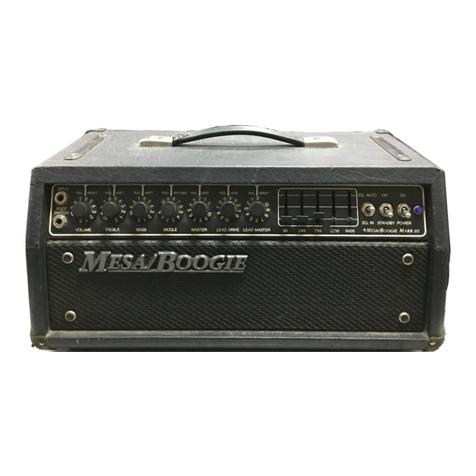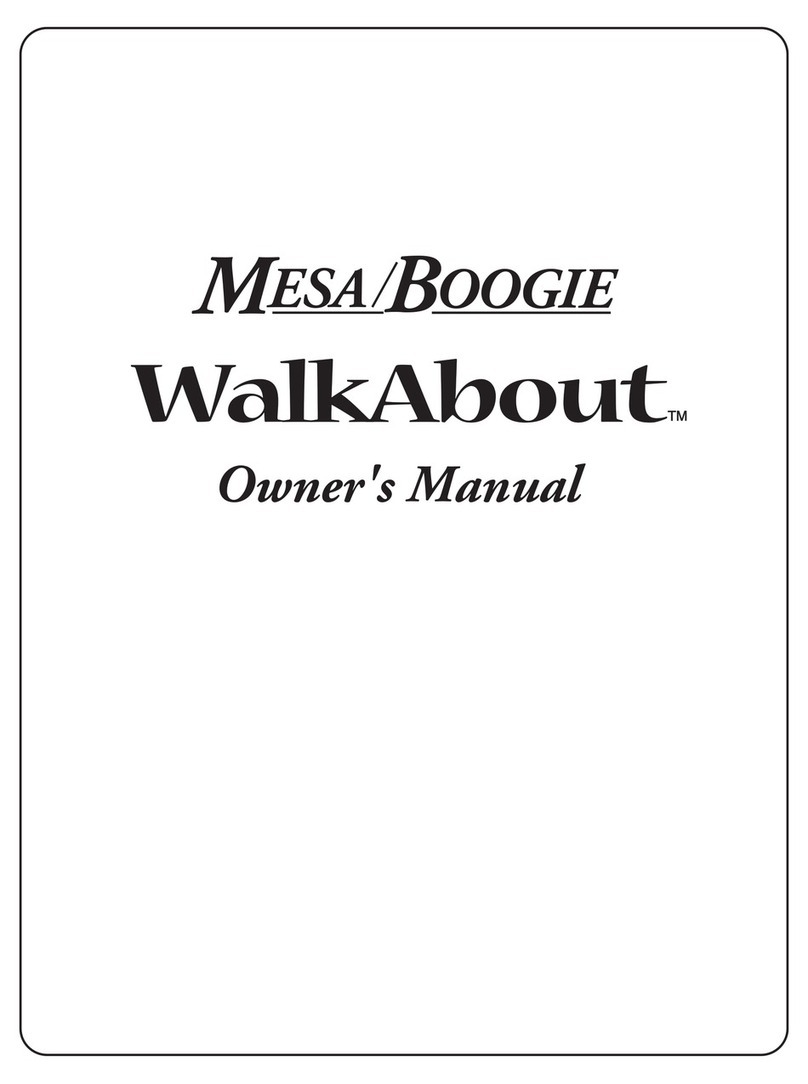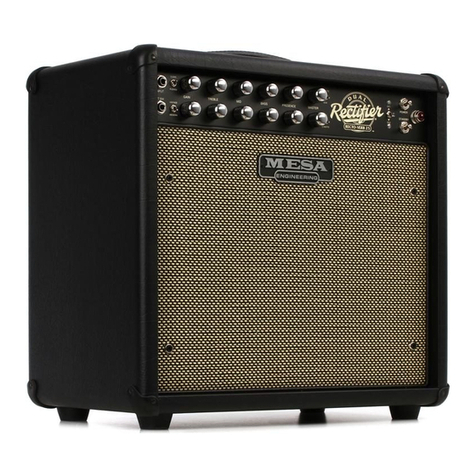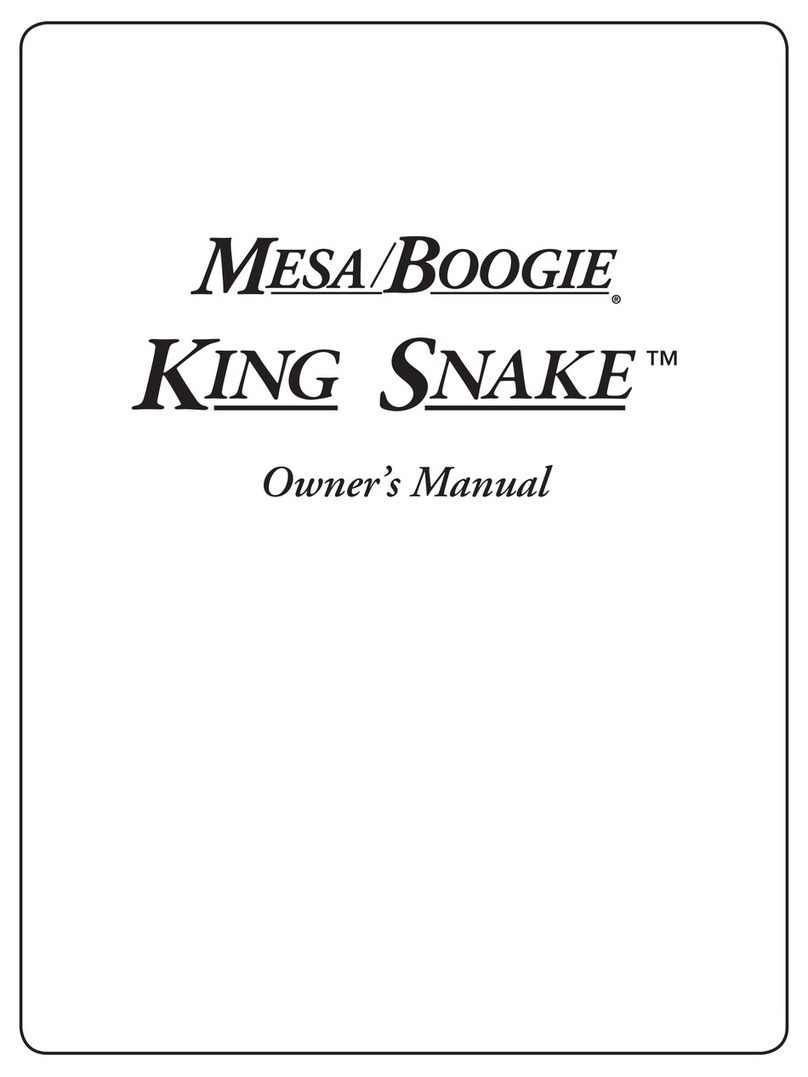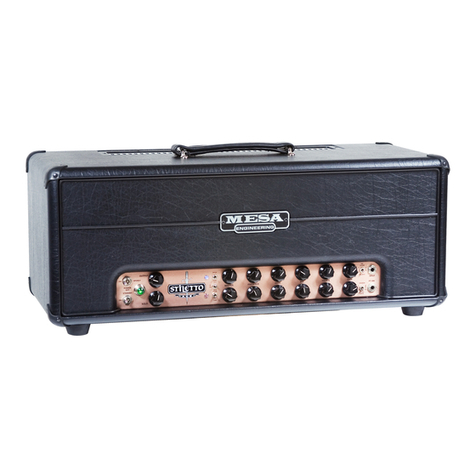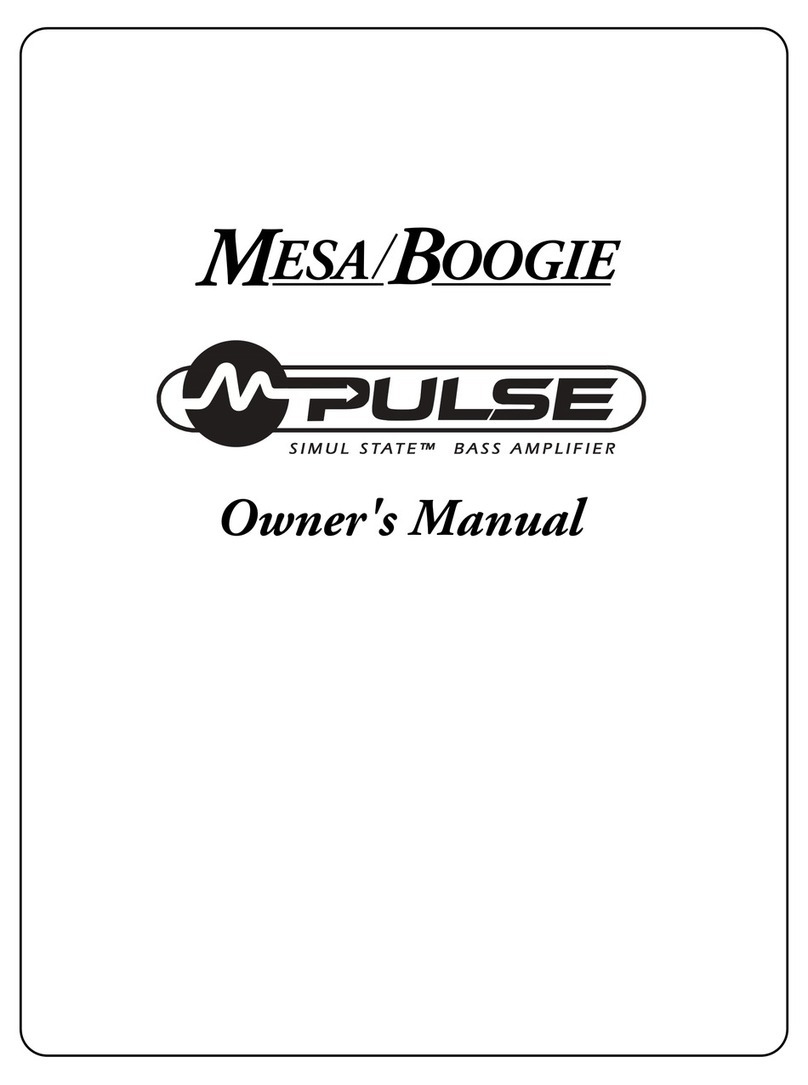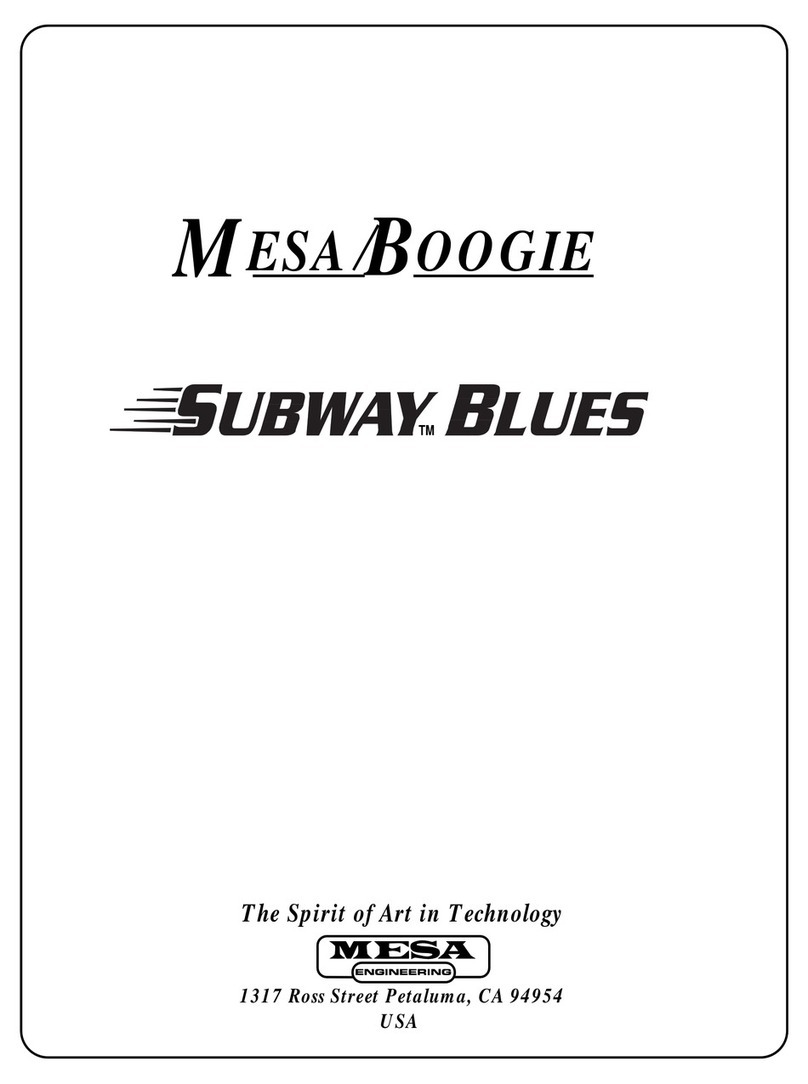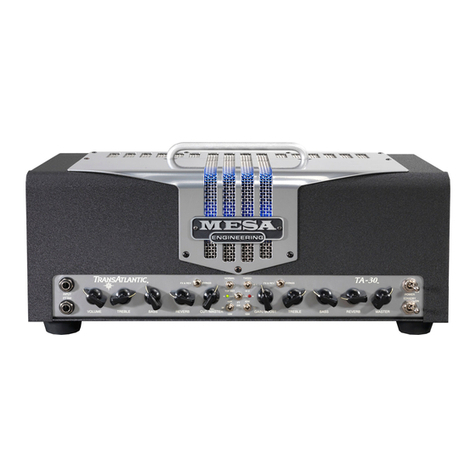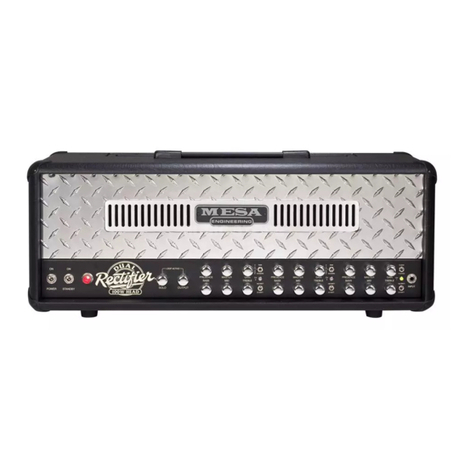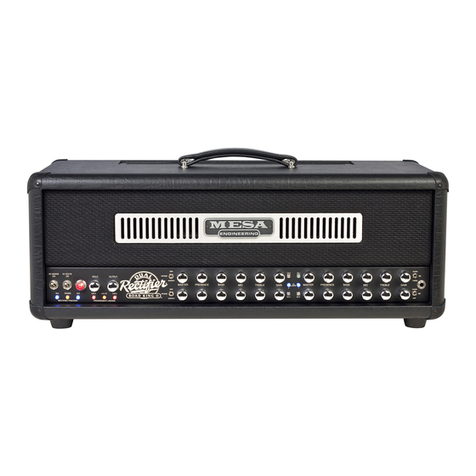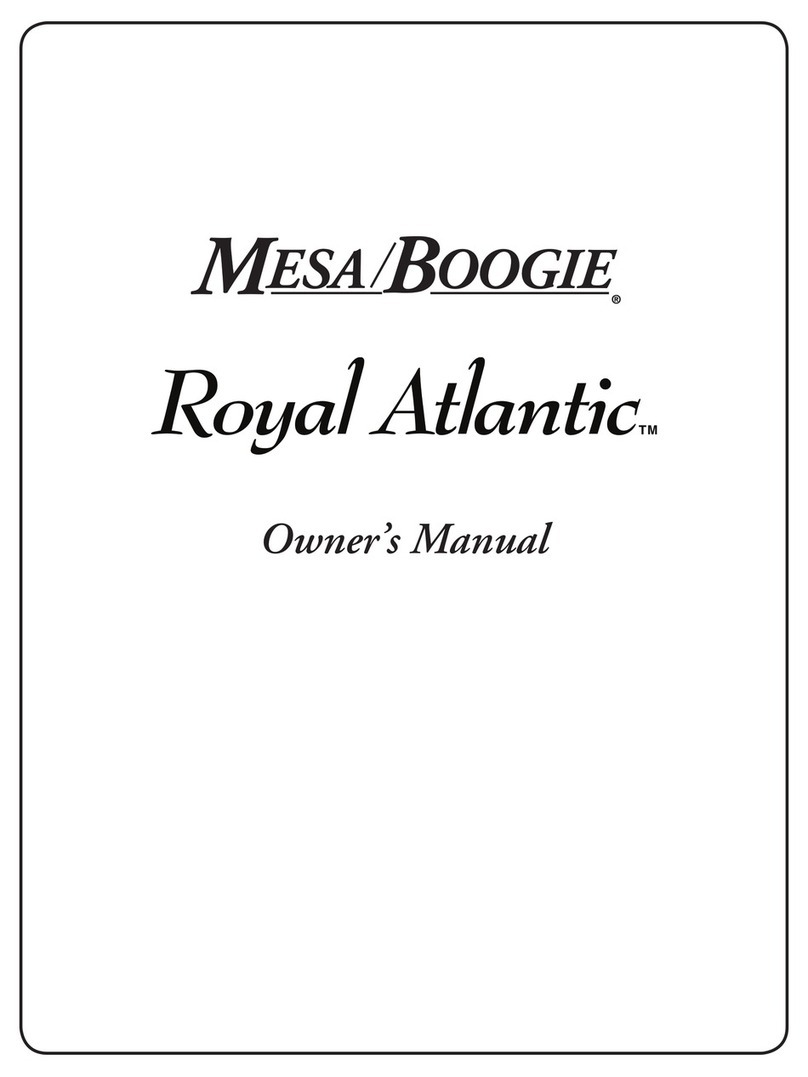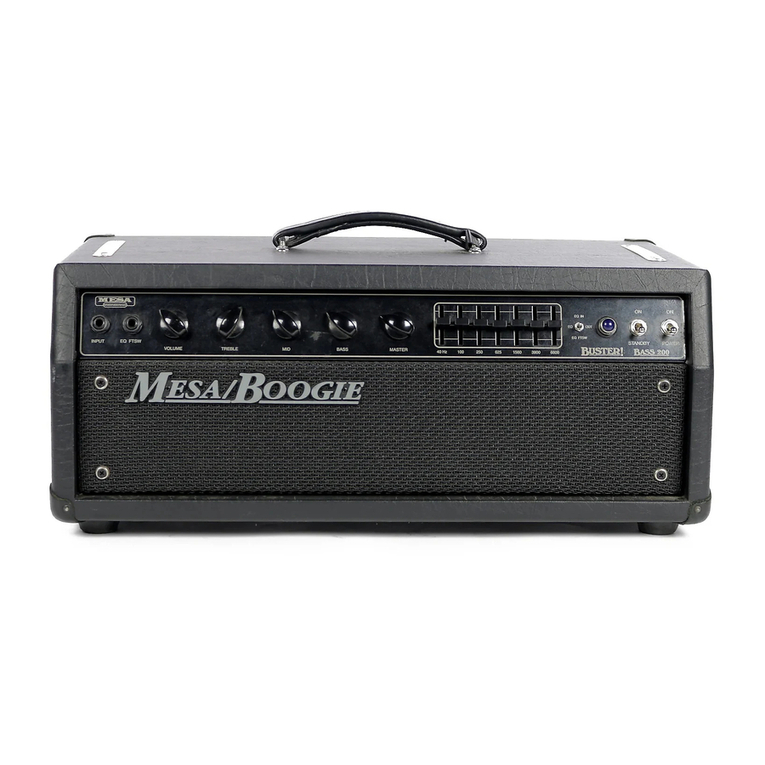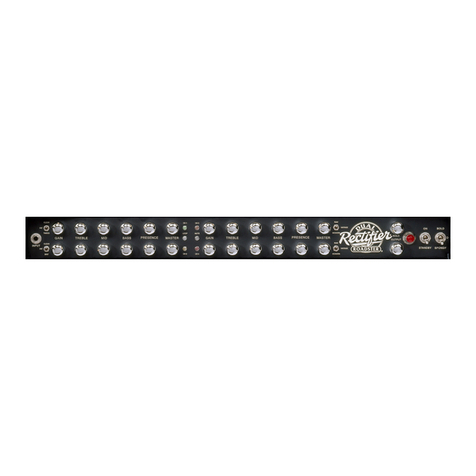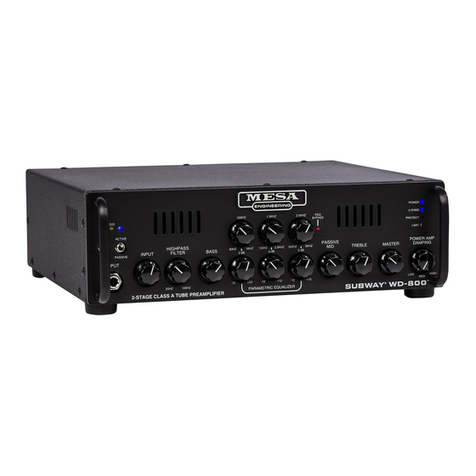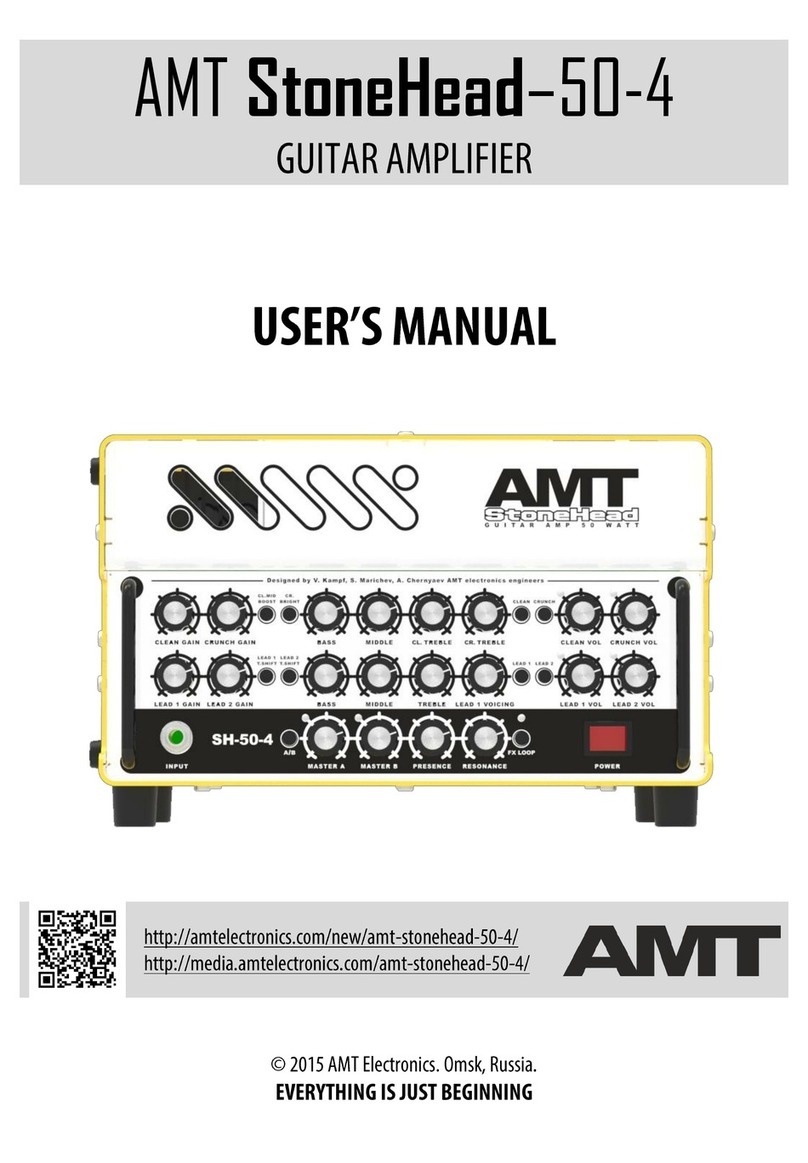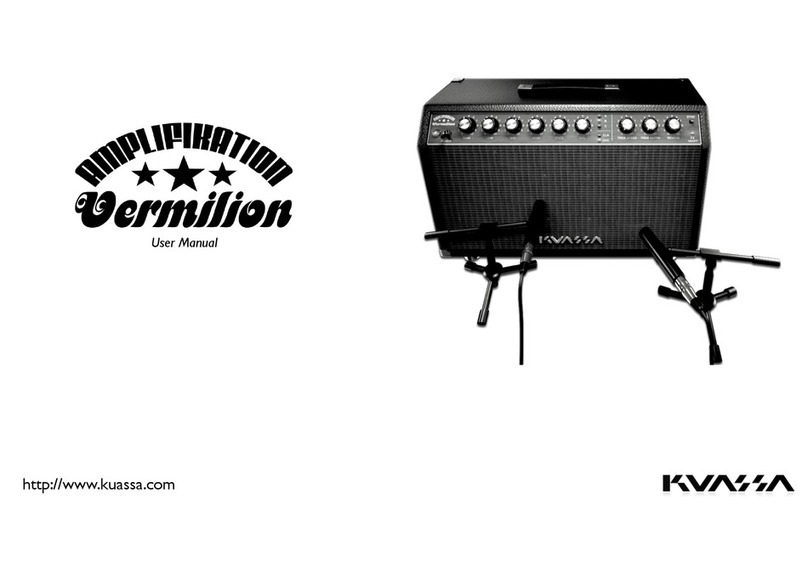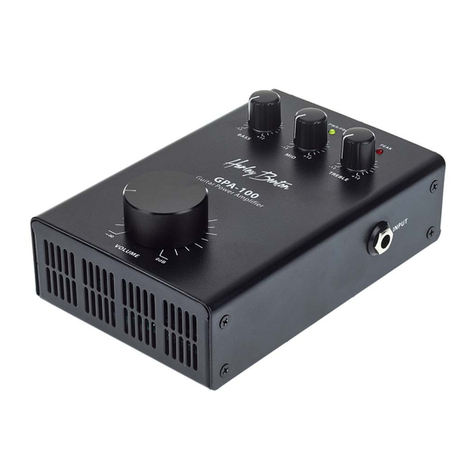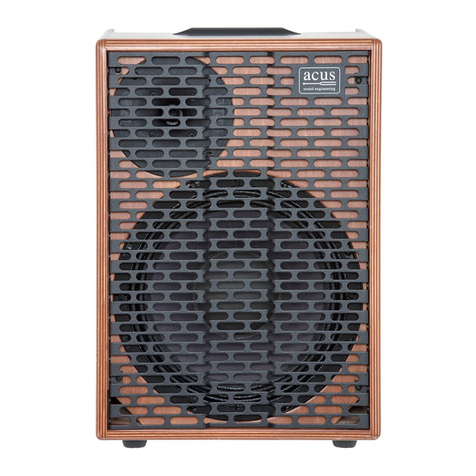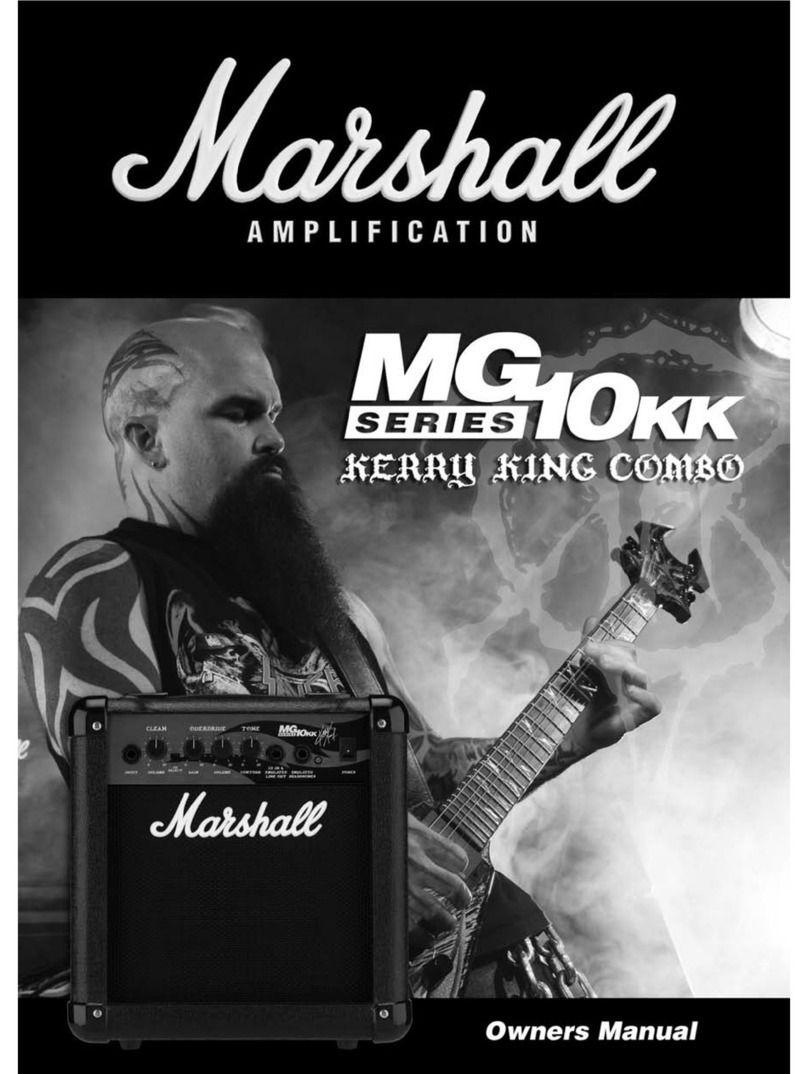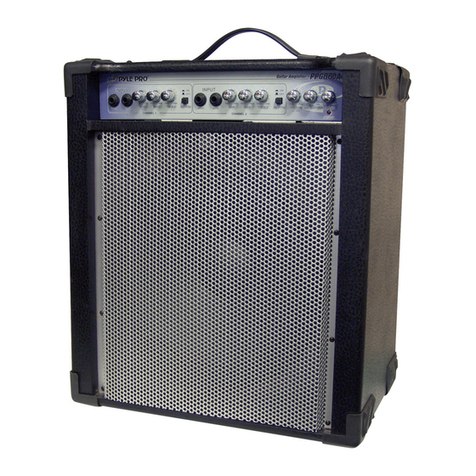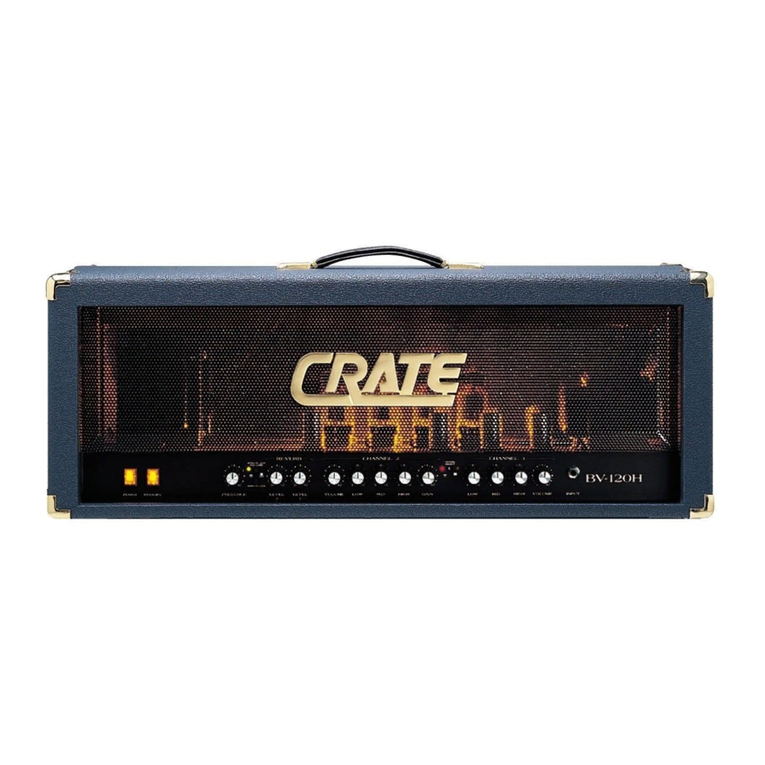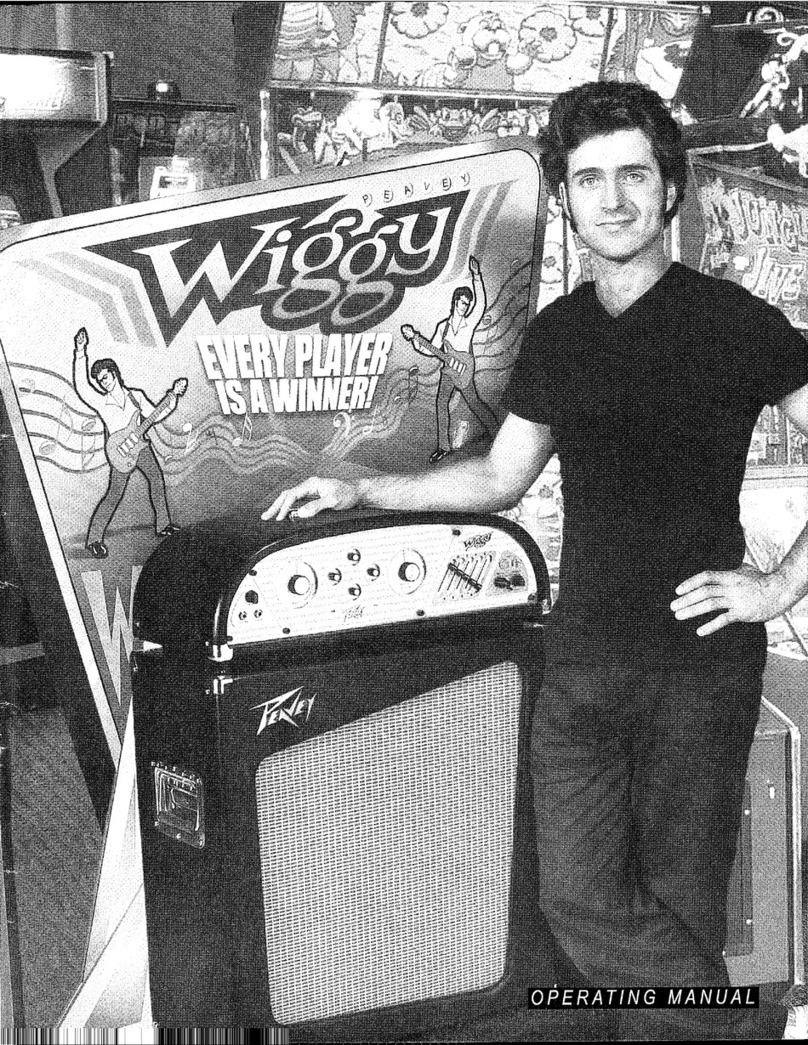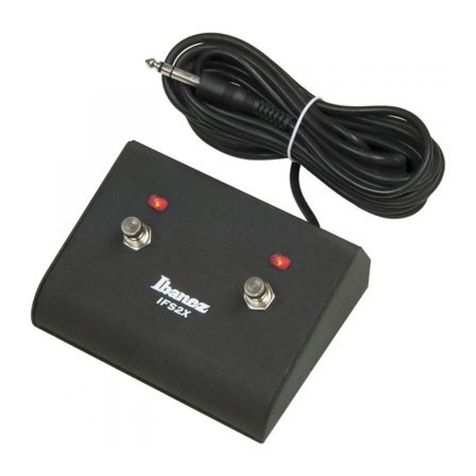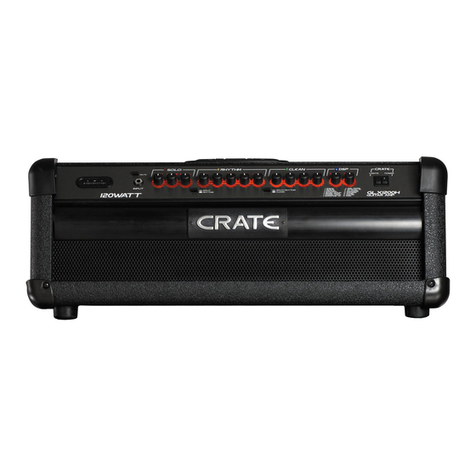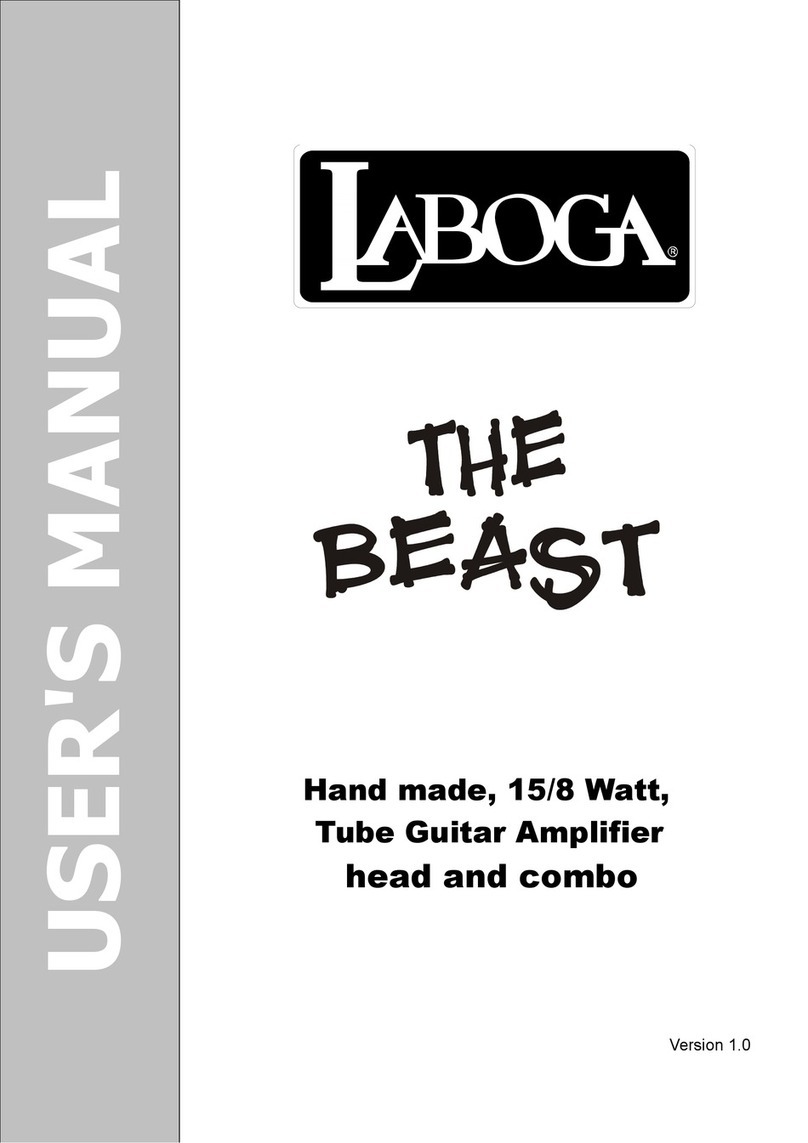
PAGE 2
Ov e r v i e w : (Continued)
These three classic circuits can be switched through via the included Footswitch and, if settings are crafted with priority in mind, a surprisingly low
level of compromise is experienced even while great footswitching performance attained. There may always be some small level of compromise
between the sounds, but given the simplicity of navigation and the quality of Tone achieved, the Electra Dyne wins hands down in the most Tone
for the least Tweak arena.
A half-power option appears on the POWER SWITCH and gives you a choice of 90 watts of Simul-Class Power – where one pair of the stock 6L6’s
run in Class AB and one pair run in Extended Class A. 45 watts turns off the middle pair of 6L6s so only the outer two are running. These are the
ones with the lowered bias so, while they are still Class AB, their Class A region is extended.
Starting all the way to the left of the Rear Panel (HeadVersion) reside two features that increase the footswitching flexibility of the ELECTRA DYNE
for live performance.
The first is a CLEAN LEVEL TRIM Control that allows you to decrease the output level of the CLEAN Mode in relation to the VINTAGE LO and HI
Modes. This helps to fine tune the sounds so that the balance of the Modes can be adjusted over a wider range of volume levels.
The second feature is a Mode specific GAIN TRIM switch located just below (or just above on Combo Version) the CLEAN LEVEL TRIM Control.
This 3 position allows you to configure the Modes to best suit either low or high gain styles. Players who need high gain settings in VINTAGE LO and
HI can “trim” the gain in the CLEAN to ensure ample headroom for their clean sound, conversely - players who need a sweet, fat rhythm in CLEAN
can “trim” the gain in VINTAGE LO and HI for a lower gain Blues sound.
All tube REVERB control rides on the Rear Panel and paints a lush, ambient landscape around these three sounds.This feature enhances not only
the chiming CLEAN Mode, but also helps transform the occasionally brash nature of the LO and HI gain circuits into sounds that can travel effortlessly
across stylistic boundaries. There is also a HARD BYPASS that removes all REVERB circuitry, including the tube stages, from the signal path for the
Brit minded purist who wants the harder hitting dry version untouched by wet hands. With the REVERB circuit engaged, there is a choice between
active in all modes and an auto-defeat feature which allows you to use the REVERB on two of the sounds – CLEAN and your choice of LO or HI –
should you want to keep either your crunch rhythm or lead sound dry while having your CLEAN still wet. There is also a ¼” jack on the underside of
the chassis that responds to tip-to-ground logic should you want to turn the REVERB on and off with a separate (not included) footswitch.
The Rear Panel BIAS SELECT allows you to swap the stock quartet of 6L6 for a quartet of the brighter sounding EL34 type power tubes. This clas-
sic British tube delivers greater accentuation of the upper harmonics and produces a low end this is somewhat stripped of sub-lows and therefore
can sound tighter for certain styles. We recommend the stock compliment of 6L6 for the greatest versatility and warmth and all three Modes. NOTE:
BIAS SELECT switch MUST MATCHTHE TUBES IN USE AT ALL TIMES! Failure to comply with this could result in damage to your amplifier that
will not be covered under warranty.
EXTERNAL SWITCH jacks on the Rear Panel allow control of the Modes from a remote master switching unit and respond to standard ¼” tip-
to-ground latching logic. This feature allows for interfacing the Electra Dyne into a large stage rig where everything is called up remotely under
(usually midi) programs in a master switcher.
SPEAKER IMPEDANCE is selected via a Rear Panel mini toggle and provides for two 8 Ohm or two 4 Ohm jacks. Standard MESA cabinets are
either an 8 or 4 Ohm load. To use the Electra Dyne with 16 Ohm loads, connect them using the 8 Ohm position. When using two 16 Ohm cabinets,
also connect them to the 8 Ohm jacks. Always check that your SPEAKER IMPEDANCE switch is set to match the load in use. Improper matching
will either prevent the amplifier from producing full power or cause the amplifier to run hot and wear the power tubes prematurely.
A SLAVE Output is provided to capture the entire sound (both preamp and power section) of the amplifier so that it can feed an effects rack or ad-
ditional power amplifiers for big venue applications. This feed is a padded-down version of the signal taken from the SPEAKER Output and does
not provide any roll-off of top end or other shaping that would be preferable for using the Electra Dyne direct into a recording console.
That covers a global look at the features of the Electra Dyne and you are now ready to get more specific about the controls and their role in shap-
ing the sounds you are looking for.
